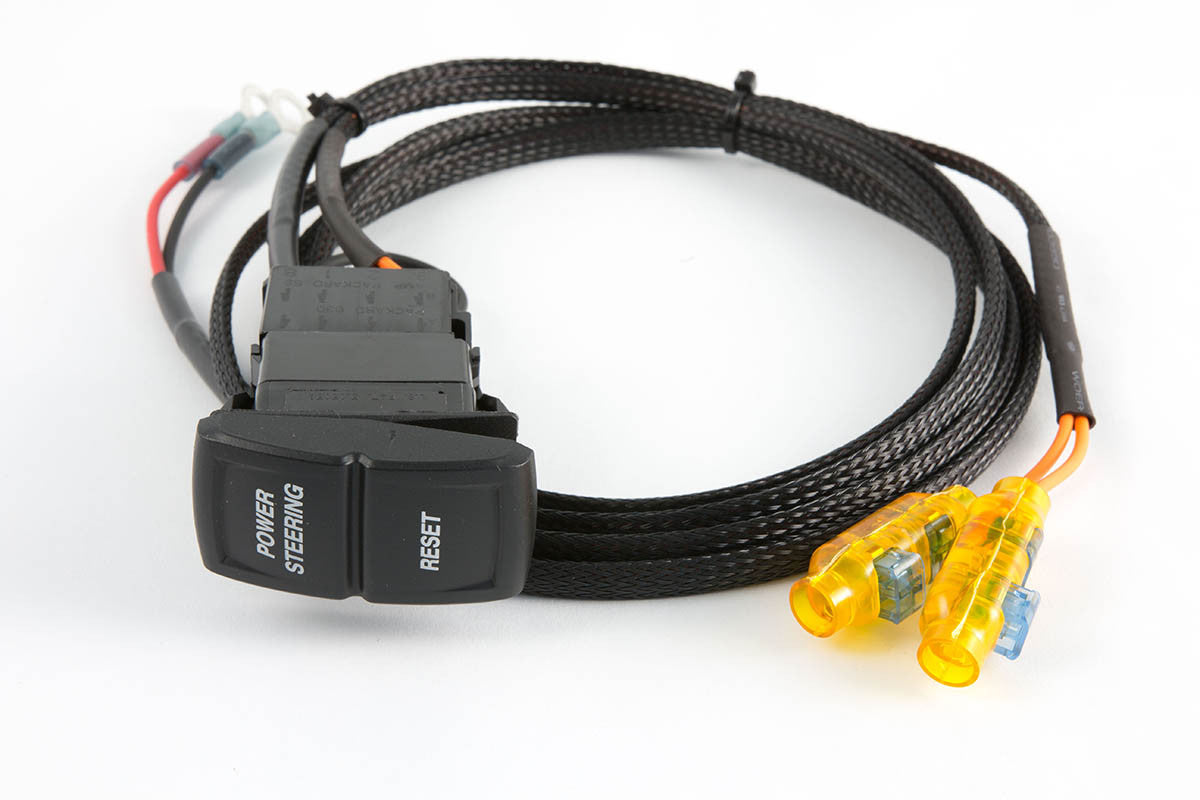How To Turn Off Power Steering: A Step-by-Step Guide
Turning off power steering might sound unusual. But there are situations where it’s necessary.
Whether dealing with a malfunction or performing specific maintenance tasks, knowing how to turn off power steering can be valuable. Power steering is a system that helps drivers steer the vehicle with less effort. It’s an essential feature in modern cars, making driving smoother and safer.
Yet, there are moments when you might need to disable it. Perhaps you’re troubleshooting a problem, or maybe you’re working on a DIY car project. Whatever the reason, understanding how to turn off power steering can save time and prevent headaches. This guide will walk you through the steps and precautions to take, ensuring you handle the process safely and effectively.
Safety Precautions
Turning off power steering requires extra caution. Understanding the safety precautions ensures a smooth and secure process. This section highlights the necessary tools, equipment, and safety measures.
Necessary Tools And Equipment
Before starting, gather the required tools and equipment. Here’s a list:
- Wrench set
- Screwdrivers
- Jack and jack stands
- Drain pan
- Power steering fluid
- Owner’s manual
Having these tools ready ensures a smooth process.
Safety Gear And Measures
Wearing proper safety gear is essential. Ensure you have:
- Safety gloves
- Protective eyewear
- Closed-toe shoes
Follow these safety measures to avoid accidents:
- Park the vehicle on a flat surface.
- Engage the parking brake.
- Disconnect the battery to prevent electrical hazards.
- Lift the vehicle using a jack and secure it with jack stands.
Using these precautions will keep you safe while working on the power steering.

Credit: www.hess-motorsports.com
Locating The Power Steering System
Understanding how to turn off the power steering requires knowing where the system is located. The power steering system is typically found in the engine bay of your vehicle. It includes several key components that work together to make steering easier. Below, we’ll guide you through the process of identifying these components.
Identifying The Power Steering Pump
The power steering pump is the heart of the power steering system. It is usually driven by a belt connected to the engine. To locate it, open the hood and look for a component with a pulley and a belt attached. The pump is often found near the top of the engine bay.
Here is a simple checklist to help you identify the power steering pump:
- Look for a small reservoir with fluid.
- Check for a pulley connected to a belt.
- Listen for a whining noise when the engine is running.
Understanding The Hydraulic Lines
The power steering system uses hydraulic lines to transfer fluid from the pump to the steering rack. These lines are usually made of metal or high-pressure rubber. Follow these steps to locate the hydraulic lines:
- Find the power steering pump.
- Look for two lines connected to the pump.
- Trace these lines to the steering rack.
The hydraulic lines are critical for the power steering system. They carry the fluid under high pressure, which assists in steering.
By understanding these components, you can easily locate the power steering system in your vehicle. This knowledge will help you if you need to turn off the power steering.
Draining The Power Steering Fluid
Draining the power steering fluid is a crucial step in turning off the power steering system. This process involves removing the existing fluid from the power steering reservoir. Doing so ensures that the system is fully deactivated. Follow these steps to drain the power steering fluid properly.
Preparing The Vehicle
First, park your vehicle on a flat surface. Engage the parking brake for safety. Open the hood and locate the power steering reservoir. It’s usually near the engine. Check your vehicle’s manual if you’re unsure. Gather all necessary tools: a wrench, a drain pan, and protective gloves.
Removing The Fluid
Place the drain pan under the power steering reservoir. Use the wrench to loosen the drain plug. Carefully remove the plug and let the fluid drain into the pan. Allow all fluid to drain completely. This may take a few minutes. Once done, replace the drain plug securely. Dispose of the old fluid properly, following local regulations.
Disconnecting The Power Steering Pump
Turning off your power steering involves several steps. One key step is disconnecting the power steering pump. This process requires careful attention. Below, we break down the steps into simple tasks.
Loosening The Belt
First, locate the serpentine belt. This belt connects various pulleys in your engine. Find the tensioner pulley. Use a wrench to turn the tensioner. This loosens the belt. Carefully slide the belt off the power steering pump pulley. Be cautious. The belt can snap back quickly.
Removing The Pump
Next, identify the bolts securing the power steering pump. Usually, you will see three or four bolts. Use a socket wrench to remove these bolts. Keep the bolts in a safe place. You will need them later.
Once the bolts are removed, lift the pump out. You may need to wiggle it a bit. Disconnect any electrical connectors. Also, detach any hoses from the pump. Some fluid may leak out, so have a container ready. Now, your power steering pump is fully disconnected.
Sealing The Hydraulic Lines
Sealing the hydraulic lines is an important step in turning off your power steering. This process prevents leaks and ensures the system functions properly without power steering. Here’s how you can do it.
Capping The Lines
First, locate the hydraulic lines connected to the power steering pump. You will need to disconnect these lines carefully. Use a wrench to loosen the fittings. Once disconnected, you need to cap the open ends of the lines. This prevents fluid from leaking out.
You can use rubber caps or specific hydraulic line caps. Make sure the caps fit tightly to avoid any leaks. Capping the lines properly is crucial for a leak-free system.
Checking For Leaks
After capping the lines, check for any potential leaks. Start by visually inspecting the capped lines. Look for any signs of fluid seepage around the caps. If you notice any, tighten the caps further.
Next, run the engine for a few minutes. This helps pressurize the system. Check the capped lines again for leaks. Ensure there are no drips or wet spots around the caps. If everything looks dry, you have successfully sealed the hydraulic lines.
Remember, a leak-free system ensures your vehicle operates safely without power steering. Regular checks can help maintain this condition.

Credit: www.reddit.com
Testing The Vehicle
Testing the vehicle is a crucial step after turning off power steering. This ensures that everything is functioning correctly. It also helps you understand how the car handles without power steering. Follow these steps to test the vehicle properly.
Starting The Engine
Begin by starting the engine. Make sure the car is in a safe, open area. This will allow you to maneuver freely. Listen for any unusual noises. These could indicate a problem with the steering or other systems.
Checking The Steering Response
Next, check the steering response. Turn the steering wheel left and right. Notice the difference in effort required. Without power steering, it will be harder to turn. This is normal. Drive slowly at first. Get a feel for the new steering dynamics. Make sure the car responds as expected. Pay attention to any resistance or unusual behavior. These could be signs of an issue.
Final Steps
You’ve decided to turn off your power steering. Great! Now, you’re almost done. The final steps will ensure everything is back in place and working as expected.
Reassembling Components
First, put back all the components you removed. Ensure you reconnect hoses and wires securely. Double-check the placement of bolts and screws. Tighten them with the correct torque. This keeps parts from becoming loose later.
Next, fill the power steering reservoir with fluid. This prevents air from entering the system. Check the fluid level and top it up if needed. Make sure everything is clean and free of debris.
Performing A Road Test
Now, it’s time for a road test. Start your vehicle and let it idle for a few minutes. This warms up the engine and power steering fluid. Then, drive slowly in an open area. Feel the steering wheel. It should be harder to turn, but still manageable.
Pay attention to any unusual noises. If you hear any, stop and check for loose parts. Test your vehicle at different speeds. Ensure the steering wheel does not jerk or pull to one side. This confirms the changes are correctly made.
If everything feels right, you’re good to go. Enjoy your newly adjusted steering system!
Troubleshooting
Experiencing issues with your power steering system can be frustrating. Turning it off is not always the solution, but understanding the common problems and knowing when to seek professional help can save you time and money. Let’s dive into the details.
Common Issues
Power steering systems are complex. Issues can arise from various components. A common problem is a fluid leak. Low fluid levels can make steering difficult. Another issue is a failing power steering pump. This can cause noise or steering stiffness.
Worn out or damaged belts can also cause problems. If the belt is loose or broken, the power steering system won’t work properly. Blockages or air in the lines can lead to steering issues as well.
When To Seek Professional Help
Some problems require a professional’s touch. If you hear unusual noises when you turn the wheel, consult a mechanic. Persistent steering stiffness is another sign. Don’t ignore it.
If you notice fluid under your car, it might be a leak. A professional can identify and fix it. Also, if your power steering warning light comes on, get it checked immediately. This light indicates a serious issue that needs attention.

Credit: www.northparktoyota.com
Frequently Asked Questions
How To Disable Power Steering?
To disable power steering, locate the power steering pump. Disconnect the power steering belt or unplug the electrical connection.
Is It Safe To Turn Off Power Steering?
Turning off power steering can make steering harder. It’s not recommended for everyday driving as it impacts control.
What Happens When Power Steering Is Off?
When power steering is off, steering becomes manual. The steering wheel requires more effort to turn.
Can I Drive Without Power Steering?
Yes, you can drive without power steering. However, it requires more physical effort to steer and maneuver.
Conclusion
Turning off power steering can be tricky but manageable. Follow the steps carefully. Always consult your car’s manual first. Disconnect the power steering pump. Drain the fluid completely. Be cautious with each step to avoid damage. Regularly check your car’s handling.
Practice driving without power steering in a safe area. This will ensure your safety on the road. Remember, safety is the priority. Adjust to the new steering feel gradually. With patience, you can adapt easily. Enjoy your driving experience with confidence.







